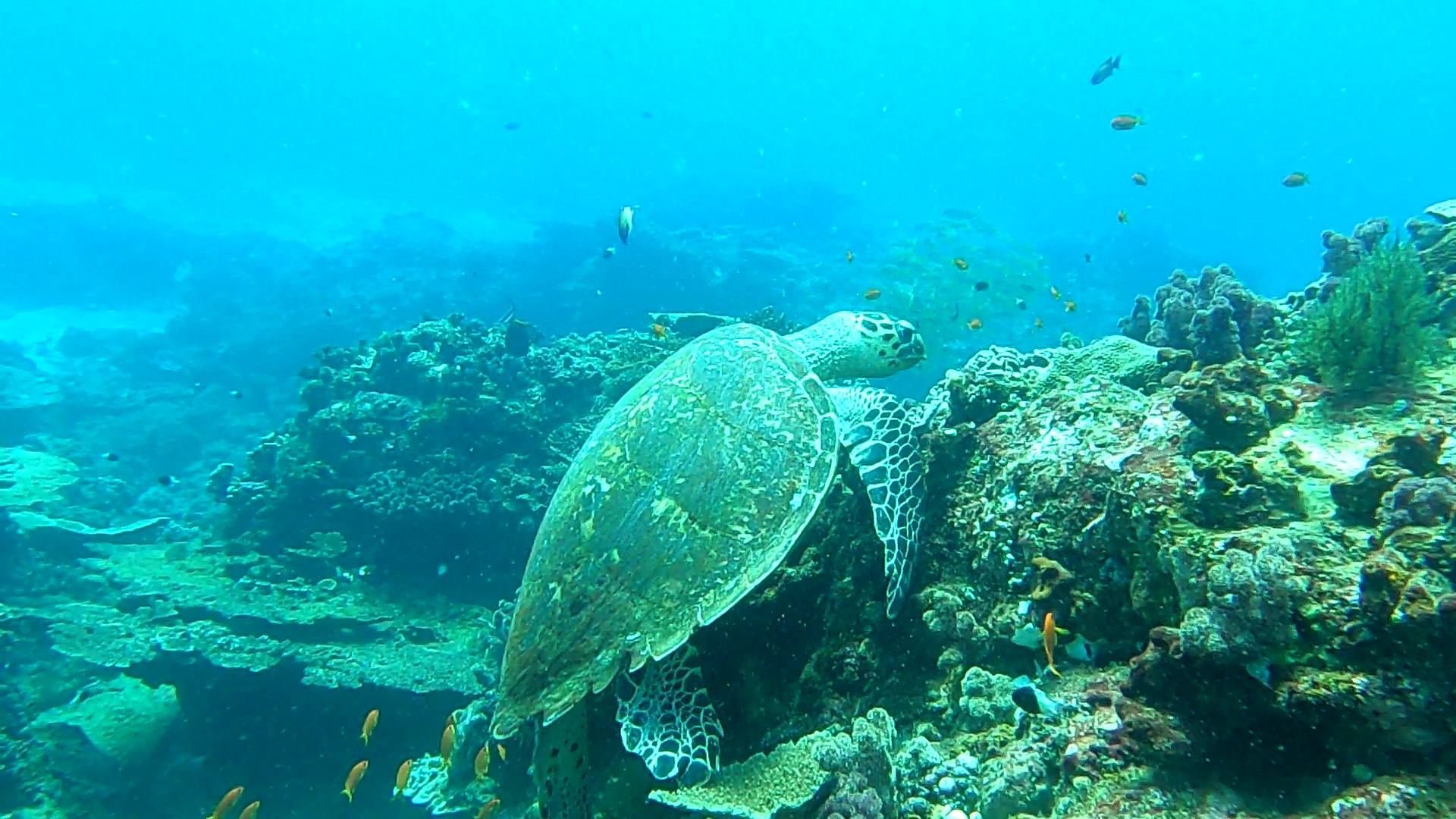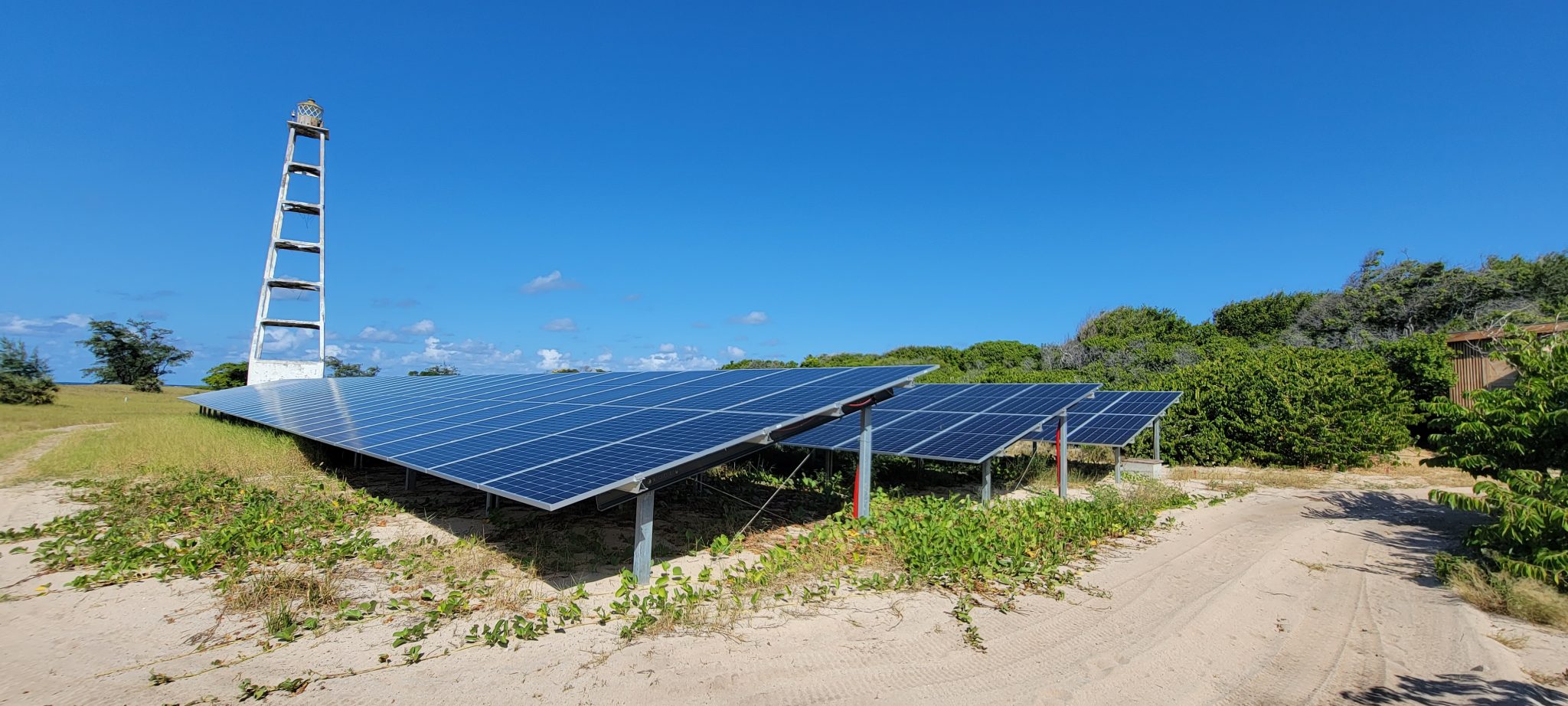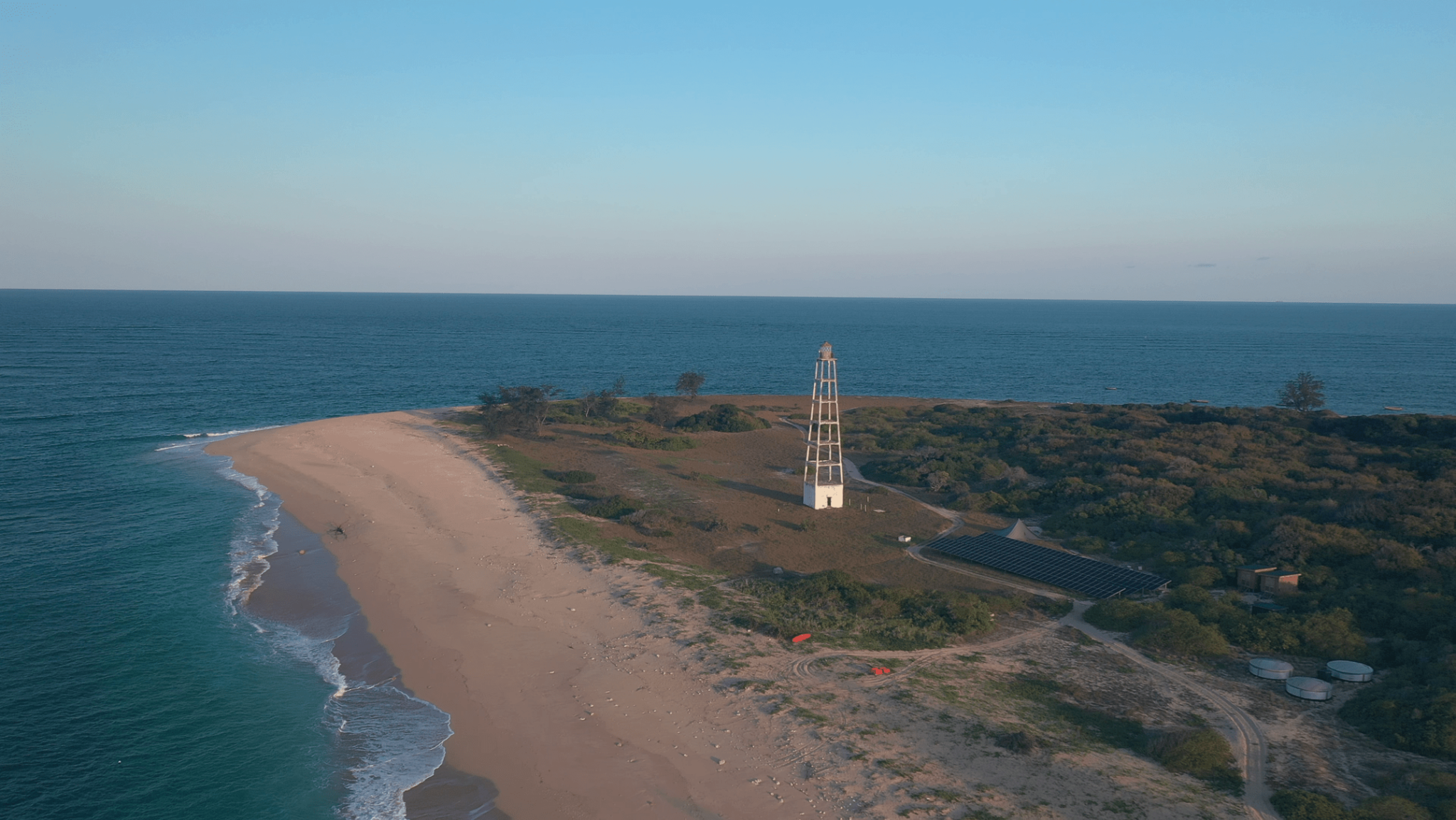Marine Life & Conservation
First of a kind: 100% clean energy island in Mozambique

Ilha do Fogo, a 42-hectare island off the coast of Mozambique, has fully transitioned to 100% renewable energy.
The island is a safe haven for one of the world’s most vulnerable marine species… sea turtles. In order to protect Ilha do Fogo’s habitat, for all wildlife, the island’s directors vowed to keep the island as low-impact on the environment as possible.
Many islands are powered almost entirely by fossil fuels, however, the environmental impact of producing this type of energy went against everything the Fire Island Conservation team is working towards.
The NPO’s chief of operations, Jan van Deventer, states “Running Ilha do Fogo purely on solar energy just makes sense. We had already developed a number of solar stills to harvest fresh water on the island, so the transition to run all our energy needs on solar power was the logical next step.”
The 120KW solar plant was installed on Ilha do Fogo in November 2022. Although the island has accommodation for guests in the manner of ‘floating’ ensuite tents, it has only recently opened up to eco-tourism. With the solar system currently operating at a fairly low usage level, it is generating an average of 6000 kWh per month. This translates to a reduction of around 70,000 kg of CO2 annually. However, it can easily generate 13,000 kWh per month to accommodate our guests on the island, which equates to an annual reduction of 156,000 kg of CO2.
The project’s conservation manager, Esther Jacobs, states “The island is truly a biodiversity hotspot and we aim to do everything in our power to protect its marine and terrestrial populations. Running on diesel-power energy goes against our ethics. Not only would this type of energy create a huge carbon footprint just in transporting fuel to the island, but would also emit pollutants, including nitrogen oxides, sulphur dioxide, and particulate matter, which can be harmful to the wildlife.”
Even the accommodation was carefully considered to minimise any environmental impact. “There are 10 tented suites sitting atop platforms that were built to ensure the existing ecosystems and vegetation stayed intact,” says Jan. “With each tent sleeping two people, we could feasibly have 20 guests staying at any given time. However, we want to keep guest capacity to a maximum of 12, ensuring our impact remains at a minimum.”
Ilha do Fogo accommodation is part of Unfound Africa’s portfolio of unparalleled destinations and undiscovered locations. Each offering in the collection has been selected for uniqueness, inspiring guests to protect their biodiversity and culture. A percentage of the proceeds from all Unfound Africa bookings are donated to Fire Island Conservation projects.
You can read more about Fire Island Conservation on their website: www.fireislandconservation.com
Blogs
Invitation from The Ocean Cleanup for San Francisco port call

6 years ago, The Ocean Cleanup set sail for the Great Pacific Garbage Patch with one goal: to develop the technology to be able to relegate the patch to the history books. On 6 September 2024, The Ocean Cleanup fleet returns to San Francisco bringing with it System 03 to announce the next phase of the cleanup of the Great Pacific Garbage Patch and to offer you a chance to view our cleanup system up-close and personal.
We look forward to seeing you there.
To confirm your presence, please RSVP to press@theoceancleanup.com
PROGRAM
Join The Ocean Cleanup as our two iconic ships and the extraction System 03 return to San Francisco, 6 years and over 100 extractions after we set sail, to create and validate the technology needed to rid the oceans of plastic.
Our founder and CEO, Boyan Slat, will announce the next steps for the cleanup of the Great Pacific Garbage Patch. Giving you a chance to view our cleanup system and the plastic extracted.
Hear important news on what’s next in the mission of The Ocean Cleanup as it seeks to make its mission of ridding the world’s oceans of plastic an achievable and realistic goal.
Interviews and vessel tours are available on request.
PRACTICALITIES
Date: September 6, 2024
Press conference: 12 pm (noon)
Location: The Exploratorium (Google Maps)
Pier 15 (Embarcadero at Green Street), San Francisco, CA
Parking: Visit The Exploratorium’s website for details.
RSVP: press@theoceancleanup.com
Video & photo material from several viewing spots around the bay
We look forward to seeing you there!
ABOUT THE OCEAN CLEANUP
The Ocean Cleanup is an international non-profit that develops and scales technologies to rid the world’s oceans of plastic. They aim to achieve this goal through a dual strategy: intercepting in rivers to stop the flow and cleaning up what has already accumulated in the ocean. For the latter, The Ocean Cleanup develops and deploys large-scale systems to efficiently concentrate the plastic for periodic removal. This plastic is tracked and traced to certify claims of origin when recycling it into new products. To curb the tide via rivers, The Ocean Cleanup has developed Interceptor™ Solutions to halt and extract riverine plastic before it reaches the ocean. As of June 2024, the non-profit has collected over 12 million kilograms (26.4 million pounds) of plastic from aquatic ecosystems around the world. Founded in 2013 by Boyan Slat, The Ocean Cleanup now employs a broadly multi-disciplined team of approximately 140. The foundation is headquartered in Rotterdam, the Netherlands, and opened its first regional office in Kuala Lumpur, Malaysia, in 2023.
Find out more about The Ocean Cleanup at www.theoceancleanup.com.
Marine Life & Conservation
SHARK MONTH ARRIVES AT ROYAL WILLIAM YARD, PLYMOUTH

A shark has been spotted approaching Royal William Yard in Plymouth, much to the surprise of swimmers, paddleboarders and onlookers.
With its distinctive dorsal fin cutting through the water, the sizeable shark swam along the coastline, before turning to head inland towards Firestone Arch at Royal William Yard. The appearance drew a crowd, who were captivated for more than an hour by the unusual sight – and it was all caught on video.
The shark is one of many expected sightings at Royal William Yard over the coming weeks… because today marks the start of Shark Month!
In reality, the ‘shark’ spotted along the Plymouth shoreline was actually a custom-made model, created by the team at Royal William Yard and sailed underwater by Caroline Robertson‑Brown from the Shark Trust, who donned scuba diving gear for the occasion.
The stunt took place to launch Shark Month in style and draw attention to the work of the leading international conservation charity, which is based in Britain’s Ocean City. Spectators were reassured that the water was safe and many entered into the spirit of the performance, swimming or sailing alongside the shark.
Shark Month will take place across Royal William Yard throughout July and will feature an extravaganza of art, entertainment and advocacy for everyone to enjoy. The packed programme of events starts with an art exhibition and ends with a trip on paddleboards with shark experts – with everything from a shark quiz to a Jaws screening in between.
Paul Cox, CEO of the Shark Trust, said: “There are often assumptions and misconceptions when it comes to sharks. This was certainly the case with the shark spotted at Royal William Yard! While the British coastline is home to many species of shark, this was not one of them. However, we’re thrilled it caught people’s attention, because seeing a shark is a special and memorable moment. That is precisely why we want to celebrate these incredible creatures, highlight the need for conservation, and ask for help to safeguard their future.”
For more information about Shark Month at Royal William Yard, visit the Shark Trust Website.
Images and video: Jay Stone
-

 Blogs2 months ago
Blogs2 months agoDiving With… Nico, Ocean Earth Travels, Indonesia
-

 News1 month ago
News1 month agoMurex Bangka Announce New Oceanfront Cottages & Beachfront Dining
-

 Blogs2 months ago
Blogs2 months agoA new idea in freediving from RAID
-

 Marine Life & Conservation1 month ago
Marine Life & Conservation1 month agoIceland issue millionaire whale hunter a licence to murder 128 vulnerable fin whales
-

 Marine Life & Conservation2 months ago
Marine Life & Conservation2 months agoThe Shark Trust Great Shark Snapshot is back
-

 News3 months ago
News3 months agoCharting New Waters; NovoScuba Goes Global with the Launch of their Revolutionary Dive Training Agency!
-

 Gear News1 month ago
Gear News1 month agoNew Suunto Ocean – a dive computer and GPS sports watch in one for adventures below and above the surface
-

 Marine Life & Conservation Blogs2 months ago
Marine Life & Conservation Blogs2 months agoBook Review: Plankton

















